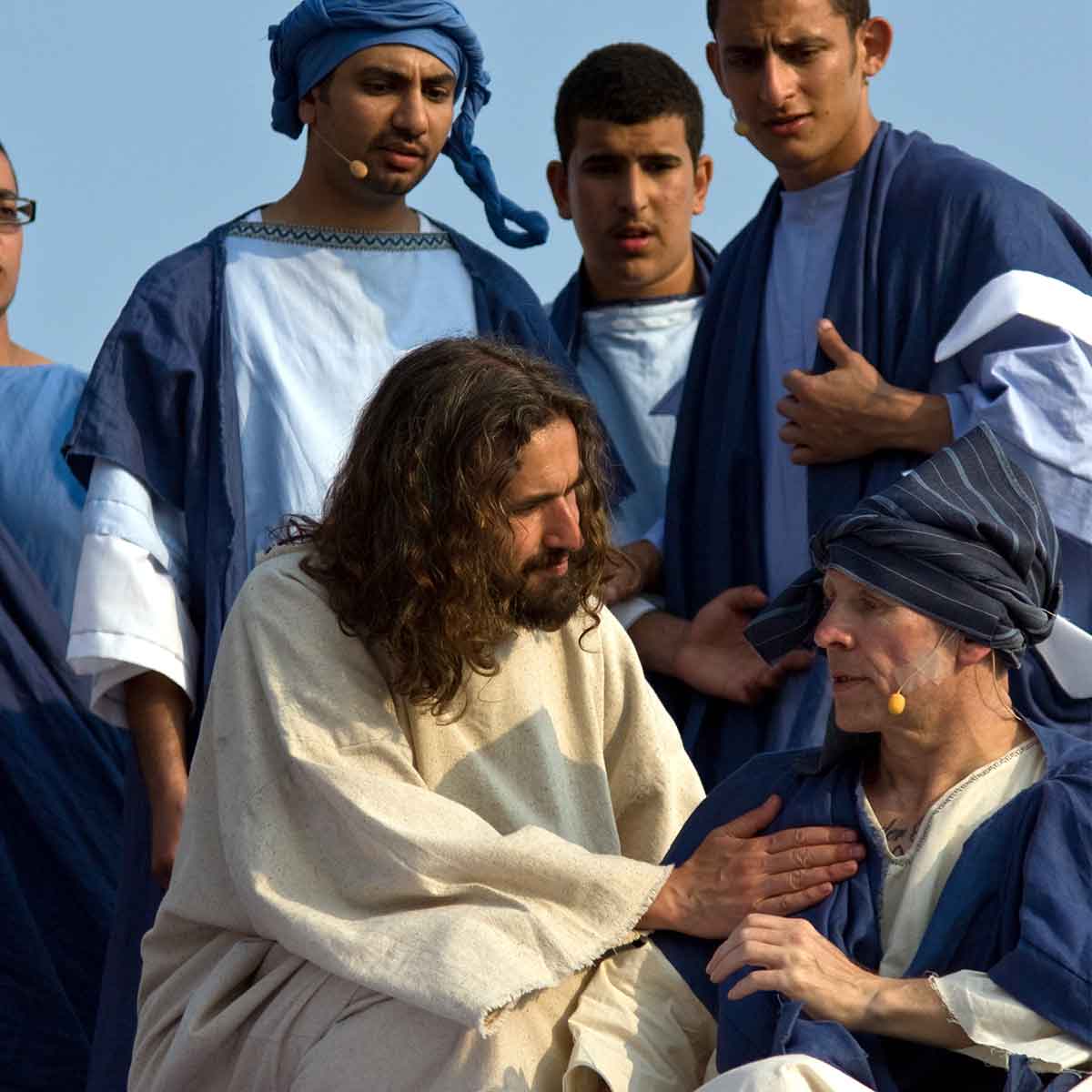History of Passion Plays

Easter plays and religious drama have a long and popular history in the UK. Today’s Passion Plays are descendants of the Quem Quaeritis Easter liturgy and the Visitatio Sepulchri liturgical dramas from the 10th and 11th centuries.
The Quem Quaeritis was a musical conversation between a group of three women who have travelled to the graveyard to weep over the body of Jesus and the angel they meet there:
‘Who do you seek in the sepulcher, O followers of Jesus?’
‘Jesus of Nazareth, the crucified, O heavenly ones.’
‘He is not here. He is risen, just as he foretold. Go, announce that he is risen from the sepulchre.’
trans. John Glassner, editor, Medieval and Tudor Drama.
As you know, dialogue is inherently dramatic. It was a very small step between hearing this exchange sung during the liturgy and seeing it dramatised with a more developed script.
That is exactly what happened and soon the dramatic impulse grew and the medieval Mystery Plays performed during the Corpus Christi festival became more and more sophisticated.
They were performed on pageant wagons at different sites around the city centre. In medieval York, for example, the Mystery Plays dramatised the whole Bible from the Fall of Man to the Last Judgement. Different guilds performed different parts of the cycle: the Flood was performed by the Fishers and Mariners, the Slaughter of the Innocents by the Girdlers and Nailers and the Resurrection by the Carpenters.
Like the scriptures that inspired them, they present a tapestry of memorable characters:
tyrant kings, pompous prelates, eccentric prophets, talking donkeys, rough shepherds, loose women, beautiful people, and criminals – and at any moment a life can be transformed by an encounter with God, His Son or an Angel. The plays appear to have been written by playwrights who never allowed piety to swamp their humanity and they abound with humour, pathos, dancing and special effects.
An astonishing array of costumes, props, and music were used. Costumes and props often included a gilded face for God in creation plays, a donkey outfit for the Balaam plays… and even fireworks for the increasingly dramatic finale of the Cycle as the world was destroyed in a flurry of sparks.
Other special effects were created by the pageant wagon itself which was offered at its simplest a raised stage and at its most sophisticated a two-story structure which had machinery to raise and lower angels and also a trapdoor that opened up to hell. This hell mouth became an increasingly spectacular construct and engravings show a gaping, monstrous mouth spurting flames and engulfing men and women who were bound for hell.
The props were often made according to their unique craftsmanship. So the guild responsible for the Last Supper in the York Cycle was the Bakers Guild and presumably it was the bread they made which was broken by Jesus. As Beadle and King (2009) point out this has less to do with modern ideas of advertising their craft or selling more loaves of bread and should be understood more in terms of their understanding of the sanctity of everyday life, where their skills, labour and products were from God and for God.
Mystery Plays were so popular that royal and noble visitors had special performances put on for them. The guilds of Coventry performed Mystery Plays for Margaret of Anjou in 1457 (who was reportedly disappointed that she missed the Draper’s Doomsday play due to lack of daylight), as well as for Richard III in 1485 and for Henry VIII in 1493.
Today’s Passion Plays also look back to the medieval Mystery Plays which involved the whole community and were performed during the feast of Corpus Christi. Medieval liturgical drama was used as an aid for devotion and teaching and Mystery Plays had a range of devotional and social uses.
Passion Plays draw inspiration from the long line of historical biblical drama in this country, but are firmly placed in local contexts and interpret the story of Easter afresh for people today. Each Passion Play is different, drawing on historical performances and also on the concerns and experiences of each local community that takes part in them each year. Find a free performance of the life and death of Jesus this coming Easter.
See one in your local community this Easter!




